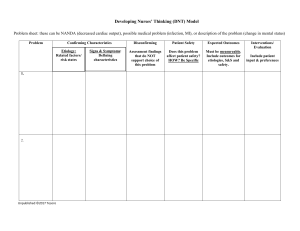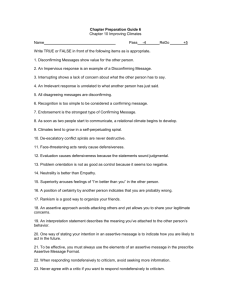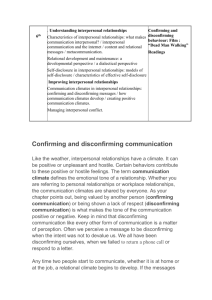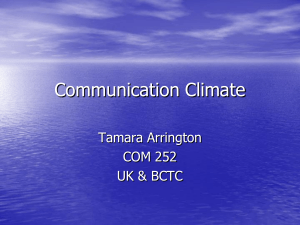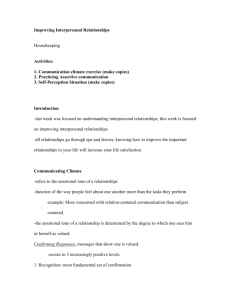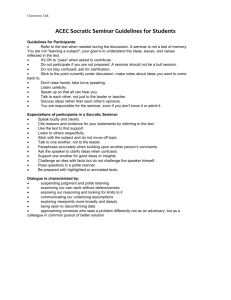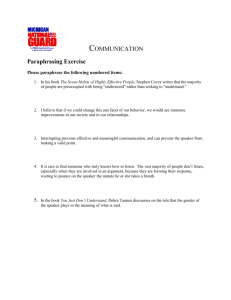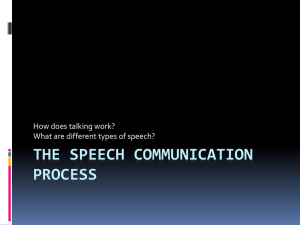Recognizing Disconfirming Responses, An Exercise for the
advertisement
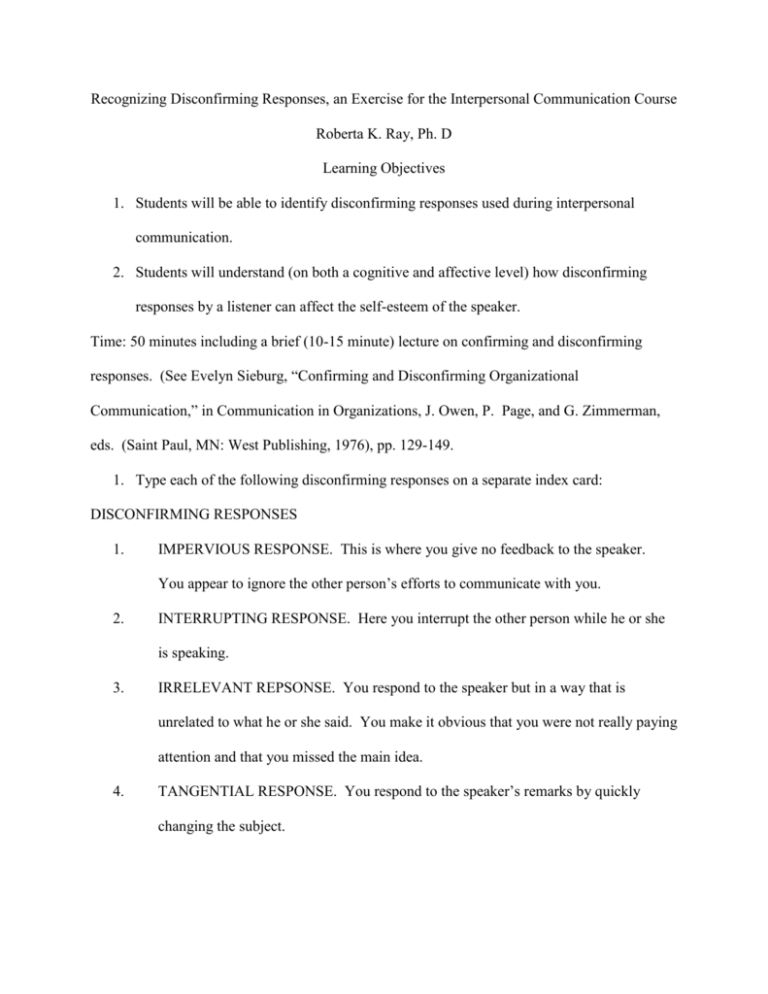
Recognizing Disconfirming Responses, an Exercise for the Interpersonal Communication Course Roberta K. Ray, Ph. D Learning Objectives 1. Students will be able to identify disconfirming responses used during interpersonal communication. 2. Students will understand (on both a cognitive and affective level) how disconfirming responses by a listener can affect the self-esteem of the speaker. Time: 50 minutes including a brief (10-15 minute) lecture on confirming and disconfirming responses. (See Evelyn Sieburg, “Confirming and Disconfirming Organizational Communication,” in Communication in Organizations, J. Owen, P. Page, and G. Zimmerman, eds. (Saint Paul, MN: West Publishing, 1976), pp. 129-149. 1. Type each of the following disconfirming responses on a separate index card: DISCONFIRMING RESPONSES 1. IMPERVIOUS RESPONSE. This is where you give no feedback to the speaker. You appear to ignore the other person’s efforts to communicate with you. 2. INTERRUPTING RESPONSE. Here you interrupt the other person while he or she is speaking. 3. IRRELEVANT REPSONSE. You respond to the speaker but in a way that is unrelated to what he or she said. You make it obvious that you were not really paying attention and that you missed the main idea. 4. TANGENTIAL RESPONSE. You respond to the speaker’s remarks by quickly changing the subject. 5. IMPERSONAL RESPONSE. You respond to the other person in an impersonal manner. For example, a co-worker says, “I am really worried about being laid off now that we have a new baby,” and you respond, “With the economy the way it is, lots of people are probably worried about being laid off. 6. AMBIGUOUS RESPONSE. You respond in a vague or highly abstract manner, so the other person can only guess at your meaning and can’t figure out what side of the fence you are on. 7. INCONGRUOUS RESPONSE. You respond with a double message, that is your words are contradicted by your nonverbal. For example, you may say, “I am really sorry to hear about that,” but there is no concern or caring in your voice. 2. In addition to the seven cards containing disconfirming responses, type the following on four cards: “You are to play the role of an active listener, being very attentive to the speaker and providing confirming responses.” 3. Select four or five students and give two of them cards asking for confirming responses and two or three of them cards containing a disconfirming response. Ask for these four or five students to sit in a circle in the middle of the classroom (fishbowl) and listen as a fifth student discusses a problem.
